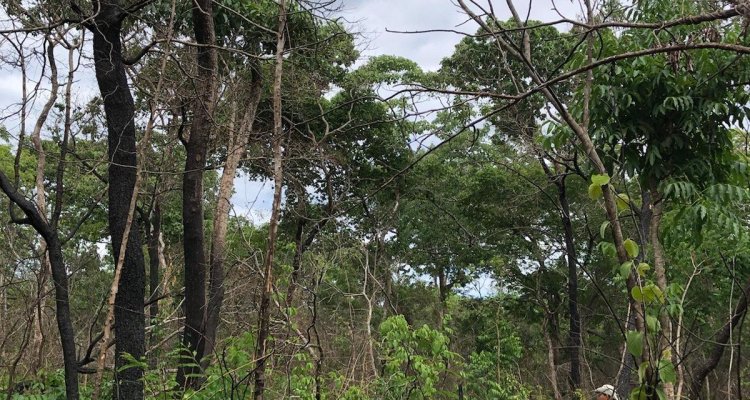
Project
Mechanistically understanding Amazon fire resilience
The Amazon under fire
Amazonian forests are some of the most biodiverse places on Earth, hosting an estimated 2 billion trees of 16,000 different species. Furthermore, they are a highly valuable carbon sink, a far-reaching source of precipitation, and a livelihood to millions of people. However, with climate change, the forest fires in the Amazon are reaching unprecedented levels of frequency and intensity. These could lead to massive forest dieback, resulting in carbon emissions and biodiversity loss. Meanwhile, variance in local climates makes for large differences in fire regimes and ecosystem responses throughout the Amazon. To help conserve these forests under such circumstances, we need to understand how their trees respond to fire.
Fire resilience
Conceptually, fire resilience is the combined ability to resist and recover from fire. By measuring the functional traits of relevant plant species, we aim to understand the mechanisms determining their fire resilience. For example, a thicker bark might help buffer against heat damage, whereas a stronger ability to resprout may promote fast recovery after a disturbance. After building a functional framework of species-level fire resilience, we can scale up to community level to assess how species and trait composition determine community-level fire resilience across Amazonian forests.
A larger scale
Hence, this project focuses on the following scales:
1- Species-scale;
2- Community-scale;
3- Amazon-scale.
For the forest-scale, we will quantify trait compositions at the community level, combined with local measurements of environmental variables and fire intensities. Further upscaling to an Amazon-wide scope can be done with the help of remote sensing tools. Here we will combine our own satellite data with global datasets on vegetation, climate and fire regimes.
Local networks
To achieve all this, we will work with a plot network in burned and unburned (control) forests spread out over both the Bolivian and the Brazilian Amazon basin across a rainfall gradient. We will closely collaborate with local researchers, land owners, park rangers, and remote sensing colleagues.